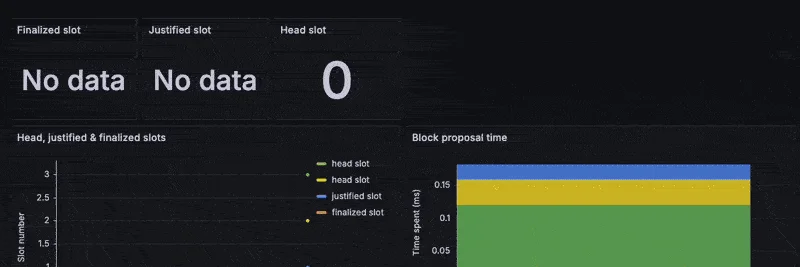In a thrilling update that's got the Ethereum community buzzing, Ream Labs just dropped the news on X: PQDevnet0 is officially complete! This marks the first big integration win in the push to fortify Ethereum against quantum computing threats using post-quantum cryptography. If you're wondering what that means in plain English—post-quantum crypto is like upgrading your blockchain's locks to withstand future supercomputers that could crack today's encryption. And get this: three independent client teams nailed finality using the 3SF-mini protocol, proving this isn't just theory—it's happening.
Think of finality as the moment a blockchain transaction becomes irreversible, like hitting "send" on an email that can't be unsent. Here, Ream Labs (building in Rust), Zeam (Zig-based from Blockblaz), and Qlean (C++ from Quadrivium) synced up flawlessly. No PQ signatures yet—this is the groundwork phase—but it's a massive step toward a quantum-resistant Ethereum.
Why This Matters for Ethereum's Future
The broader mission? Tackle the "harvest now, decrypt later" nightmare where bad actors snag encrypted data today to crack it tomorrow with quantum tech. The PQ devnets are laser-focused on proving:
- PQ signature viability: Can hash-based multi-signatures zip through in under a second?
- Aggregation smarts: Bundling signatures efficiently without slowing the network.
- Client harmony: Different teams' code playing nice together.
- Hardware limits: Fitting it all within EIP-7870's constraints for leaner nodes.
Ream Labs' thread highlights their "early integration" vibe—building code alongside specs to spot issues fast. It's like cooking a new recipe while tweaking the cookbook on the fly. This approach, inspired by the STEEL team, speeds up the road to real-world deployment.
What Went Down in PQDevnet0
The wins are stacking up:
- A fresh specs framework to guide everyone.
- Basic consensus engine via 3SF-mini (a lightweight protocol for quick testing).
- Rock-solid multi-client interop—Rust, Zig, and C++ talking seamlessly.
- Metrics tracking to measure performance.
- The slick leanView block explorer for peeking under the hood.
Of course, it wasn't all smooth sailing. Syncing gossipsub (Ethereum's rumor-spreading network layer) params across clients was tricky, and without ready test vectors, debugging meant poring over state dumps. Lesson learned: Nail those vectors before the next round, as they're working on now.
Peeking Ahead: Devnet1 and Beyond
Excitement builds for Devnet1, where actual post-quantum signatures enter the chat—drawing from cutting-edge papers like Hash-Based Multi-Signatures for Post-Quantum Ethereum. Targets? Block signing under 1 second (aiming for 500μs), attestations zipping by in the same timeframe, and 24-hour stability with 4-second blocks. No aggregation yet—they're keeping it incremental to avoid overload, betting on fresh research breakthroughs soon.
This all ties into Lean Ethereum, an open-source sprint to slim down and secure the network. Want to jump in? Check the roadmap, specs repo, or client code like Ream's Rust impl. Devnet quick-starts are ready via Zeam's guide or Ream's local setup.
Shoutout to the power players: Justin Drake, Will Robinson, Ladislaus, and a squad of contributors from specs to infra. The full deets are in Ream Labs' HackMD deep dive.
As Ethereum eyes a quantum-proof era, milestones like PQDevnet0 remind us: Innovation here isn't optional—it's existential. What's your take on post-quantum upgrades? Drop it in the comments, and stay tuned for more blockchain breakthroughs at Meme Insider.



